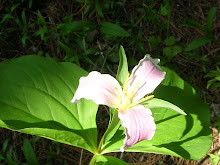From my GSW assignment on Taxonomy
NO, not that kind of Common Time
This kind of Common Thyme
Thymus vulgaris L.
Kingdom—Plantae--It’s a plant
Subkingdom—Tracheobionta—it has pipes, like trachea. “Vascular” plant—it has pipes to run water and nutrient through the plant
Superdivision—Spermatophyta—It will make seeds for reproduction
Division—Magnoliophyta—It makes flowers too—once called Angiospermopsida
Class—Magnoliopside—this one means it is a dicotyledon and that means it has two leaves when it just starts growing (embryonic) that are different from its adult leaves.
Subclass—Asteridae—a part of the Aster class—the petals of the flowers come together into a tube. Some scientists use this subclass and others do not.
Order—Lamiales---this order of plants, about 11,000 are all related in an evolutionary way. Lamials have five fused petals, four or fewer stamen, a superior ovary with two fused carpels (the stigma, style and ovary of a plant) and tend to be bilaterally symmetrical
Family—Lamiaceae or Labiatae—part of the mint family—the name came from how the petals typically form into a fused group, like a lip (labia) and is also called Labiatae but that appears to be an older name and Lamiaceae is more common now.
The Lamieceae family typically has plants with highly aromatic leaves (mint, thyme, rosemary, salvia, sage) square shaped stems (mint is particular known for that) flowers that form into a whorl and are irregular meaning some petals are fused and form the lip-like shape of the flower. Some members of this family have hairy stems and usually have a total of four stamens and large ovary areas at the base of the flower. The leaves tend to be simple, single-lobed leaves with small glands or gland-dots on them where the volatile oils will come out when bruised or rubbed.
Genus—Thymus L.—Thyme—the name comes from the Greek Thymiamia, which means Something for burning/Incense/smoking and thyme was used to purify temples. Also the Greek word Thymos means “courage and Strength” and that helped cement the use of thyme as a charm in battle for soldiers to wear.
Species—Thymus vulgaris L. --vulgar or vulgaris means “common”, not uncouth as we tend to think of it now. The Common people were considered “uncouth” so it all related.
Common Name: Thyme, Garden Thyme and Common Thyme
Common Thyme is a small shrub-like plant native to the Mediterranean areas of Europe. It has a woody main stem and many branches. The entire plant is usually under a foot in height, growing to usually 4-8 inches. The breath of the plant is usually about the same as its height. The leaves are the most notable part of the plant although they are small in stature. The small, thin and elliptically shaped leaves may measure only an 1/8 of an inch long and half that measure wide, but they contain small glandular spots on them that produce the familiar and powerful scent of thyme. The leaves are a greenish-grey in color and come in pairs on each side of the small “foot-stalks”
Thyme flowers in the mid-late spring (May) and might bloom all the way into August with favorable conditions. The tiny pink or lavender or white flowers have five petals. The upper three petals tend to be fused into the upper “lip” and the bottom two likewise.
Thyme likes the sun, but is also happy to live in a shaded area. While it needs water, it is not a water-hog, indeed too much water will kill it as we discovered last year after a small watering system flood! It can grow in abandoned areas, rock gardens, roadside spots as well as tended gardens but likes light, chalky soil. Thymus vulgaris is also good potting herb. Thyme is perennial and winter-overs well in all but the coldest of areas. It can be used throughout the winter but it is best to harvest thyme for culinary uses just before it blooms in Spring.
Sources:
Thymus vulgaris L-- http://plants.usda.gov/java/profile?symbol=THVU
Lamiaceae—Mint Family—Plant-Life.org -- http://montana.plant-life.org/families/Lamiaceae.htm
Thyme, A medical Plant—The Epoch Times, June 27, 2008—
http://en.epochtimes.com/news/8-6-27/72463.html
Lamiaceae: Elizabeth Retief, National Herbarium, Pretoira, July 2008 http://www.plantzafrica.com/plantklm/lamiaceae.htm
Thyme: A Modern Herbal. M. Grieve –1995-2001 http://www.botanical.com/botanical/mgmh/t/thygar16.html
Bremmess, Lesley, The Complete Book of Herbs: A Practical Guide to Growing and Using Herbs. Studio Publishers, 1994
BTW---I have spent probably more than I should on books that are coming in the mail. Of course this little town doesn't have dittly-squat on herbs...anywhere. So I had to order. But the Grieve Herbal is lovely and it is online...see above.
Next project...harvesting techniques. Thyme is really easy that way and can be harvested all year long.





No comments:
Post a Comment